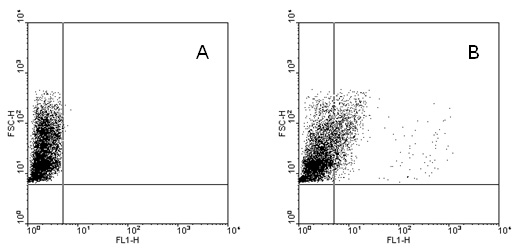Tlr9 (1-815) Mouse Monoclonal Antibody [Clone ID: 5G5]
Specifications
| Product Data | |
| Clone Name | 5G5 |
| Applications | ELISA, FC, IF, IHC, WB |
| Recommended Dilution | Immunohistochemistry on Frozen Sections: 10µm sections were fixed with acetone for 10 minutes. PBS washed sections were incubated with 5G5 1:100 in 1% BSA for 30 minutes at RT. (Ref.7). The typical starting working dilution is 1:50. Immunohistochemistry on Paraffin Sections: Paraffin embedded tissues 5µm sections were made. After antigen retrieval (0.01mol/l, pH6 sodium citrate) and quenching of endogenous peroxidase, sections were blocked with 0.5% ovalbumin and 0.1% gelatin for 20 minutes at RT. Sections were incubated with 5G5 for 1 hour at 37°C. (Ref.3). The typical starting working dilution is 1:50. Flow Cytometry (Ref.1,5,6,8): RAW264.7 cells were fixed for 15 minutes with 4% formalin and permeabilized (PBS, 0.5%BSA, 0,5% saponin) at RT. (Ref.1). Immunofluorescence (Ref.1,3): Cells were fixed with 2% formalin for 15 minutes at RT and permeabilized with a mAb (4µg/400µl) containing buffer (PBS, 0.2% BSA, 0.2% saponin) for 1 hour. (Ref.1). Western blot (Ref.1-4): Reduced lysates were resolved by 10% SDS-PAGE and blotted on nitrocellulose. After blocking with 5% skimmed milk TLR9 was detected with 2µg/ml 5G5 (Ref.1). The typical starting working dilution is 1:50. Immunoassay. Positive Control: RAW macrophages stimulated with IFN-gamma. |
| Reactivities | Canine, Human, Mouse |
| Host | Mouse |
| Isotype | IgG2a |
| Clonality | Monoclonal |
| Immunogen | Purified fusion protein of extracellular domain of Human TLR9 (AA 1-815) and Human IgGFc |
| Specificity | The monoclonal antibody 5G5 recognizes Human Toll-like receptor 9. |
| Formulation | PBS Label: Biotin State: Liquid 0.2 µm filtered Ig fraction Stabilizer: 0.1% BSA Preservative: 0.02% Sodium Azide |
| Concentration | 0.1 mg/ml |
| Purification | Protein G Chromatography |
| Conjugation | Biotin |
| Gene Name | toll-like receptor 9 |
| Database Link | |
| Background | Toll-like receptors (TLRs) are highly conserved from Drosophila to humans and share structural and functional similarities. TLRs constitute of a family of pattern recognition receptors (PRRs) that mediate cellular responses to a large variety of pathogens (viruses, bacteria, and parasites) by specific recognition of so-called ‘pathogen-associated molecular patterns’. Activation of TLRs, a family of at least 11 different members that function either as homo- or heterodimers, leads to activation of NFκB-dependent and IFN-regulatory factor-dependent signaling pathways. TLRs have a central role in innate immunity and are also required for the development of an adaptive immune response. TLRs are expressed by various cells of the immune system, such as macrophages and dendritic cells. They recognize and respond to molecules derived from bacterial, viral and fungal pathogens. |
| Synonyms | Toll-like receptor 9, UNQ5798/PRO19605 |
| Reference Data | |
Documents
| Product Manuals |
| FAQs |
| SDS |
{0} Product Review(s)
Be the first one to submit a review






























































































































































































































































 Germany
Germany
 Japan
Japan
 United Kingdom
United Kingdom
 China
China



